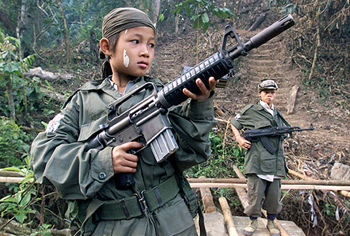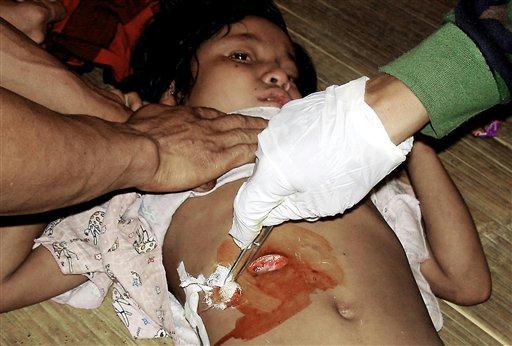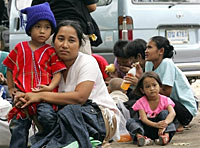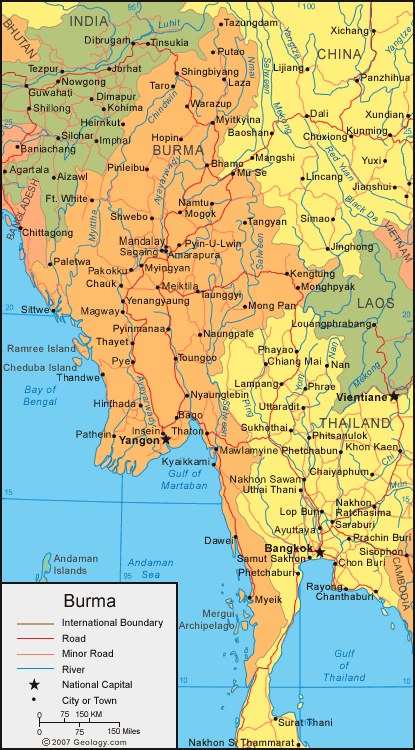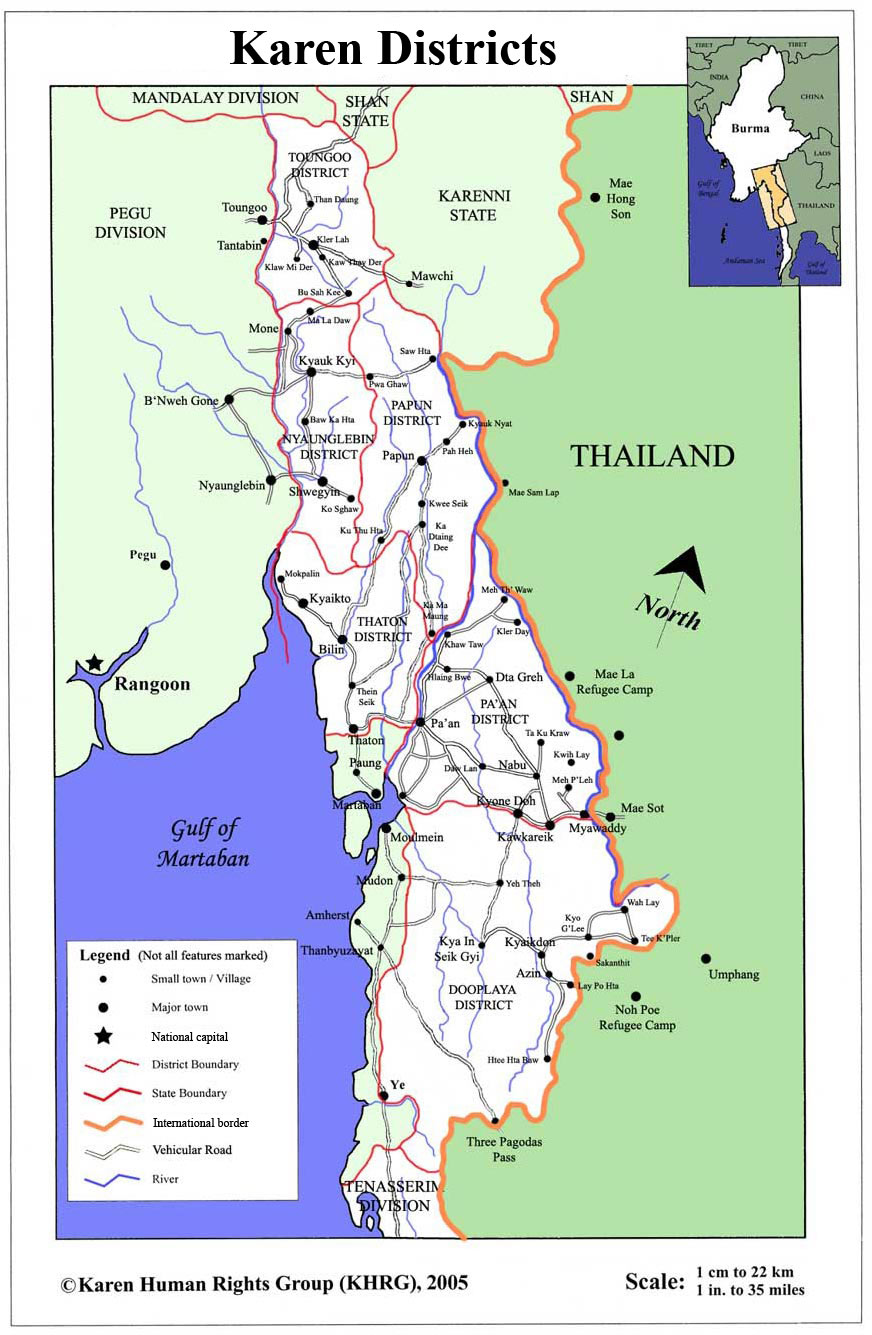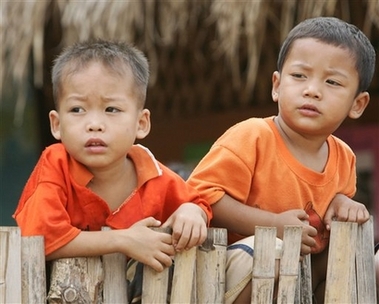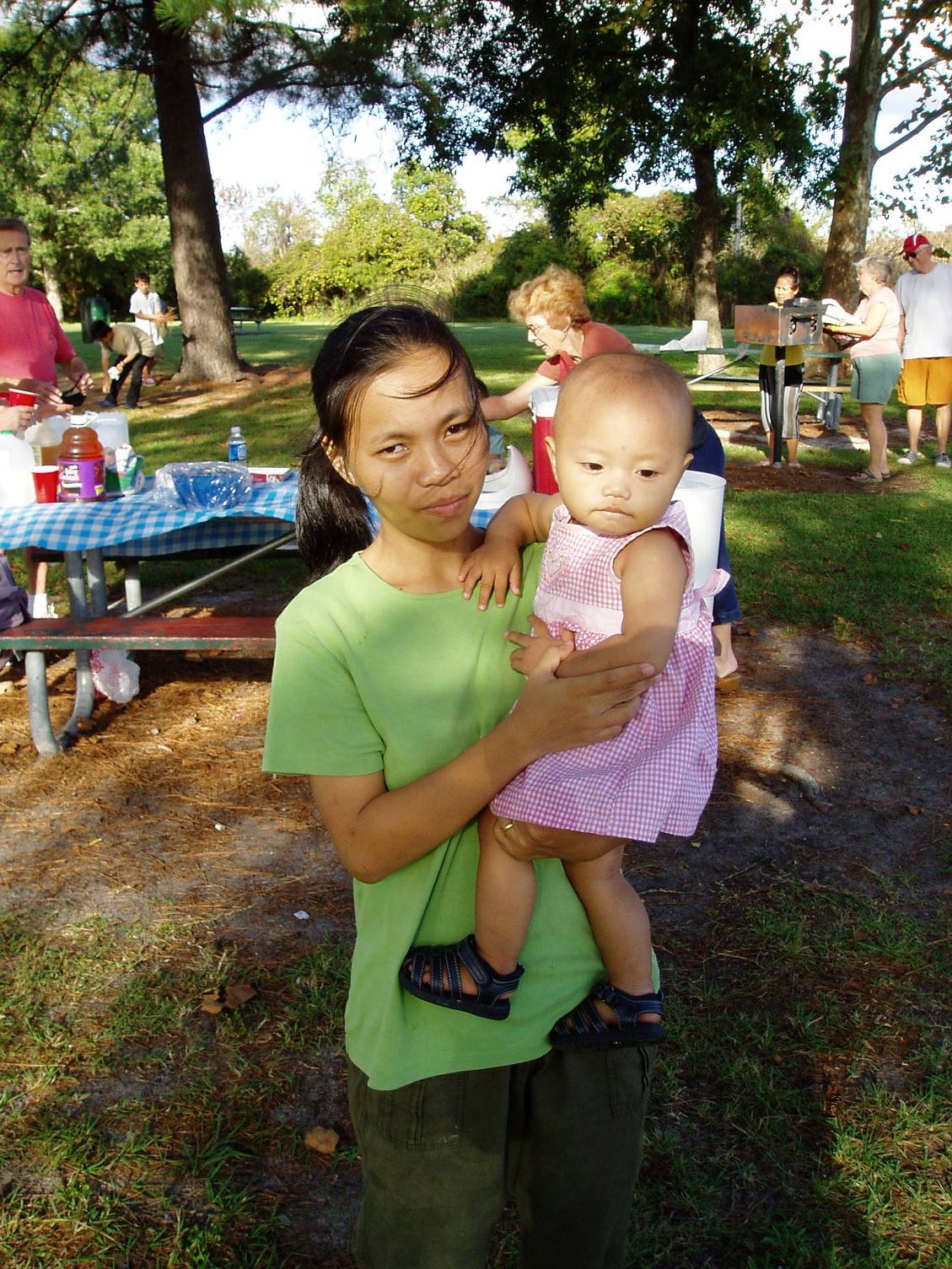This writer, former Asia
correspondent for The Christian
Science Monitor, assembles this summary from reporting, research,
and working first hand with Karen refugees he helps settle in New Bern, North Carolina.
Here in New Bern, far from the violence of eastern Burma, a modest
social experiment takes place: the resettlement of Karen refugees, with
sponsorship of local churches and others. As many as 80, including some
non-Karen, may arrive in the broader East Carolina region in a year.
Coordinated by the Interfaith
Refugee Ministry, an affiliate of the
Episcopal Migration Ministries, the program offers friendship, help
with the immediate needs of families. The needs include housing and
furnishings, clothing, food, medical exams, transportation, jobs and
language training.
- Check Karen refugee Klee
Thoo's perception of the Karen
culture and behavior as it affects Karen resettlement abroad.
- Check Wikipedia for a thorough background on Burma.
- Check Wikipedia for a description of Karen Tibetan origins.
- Explore the Karen way of life and
historic Baptist connection in the massive, comprehensive and
multimedia "Karen Konnection"
website.
******************
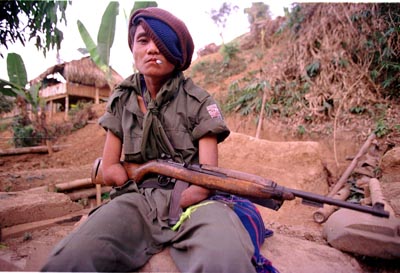
In Burma
Often they seem smiling, even deferential.
The Karen are known for avoiding direct
confrontation and the open expression
of emotion toward "strangers."
At first glance it seems hard to imagine they could be first rate
soldiers, at least as fierce and brutal as any other people.
It is easy to romanticize them.
Cheerful, with a sense of fun, the children frolicking, the parents
often starting at the bottom, studying English, working menial jobs.
But not far behind is a proud warrior tradition, decades of brutal
guerrilla war, fighters who have not surrendered, a once demeaned
people who have fought a losing battle to create their own nation.
The Karen have suffered massacre, razing of their villages, rape, and
kidnapping. We often see them as "human rights victims."
See this Christian Science Monitor report
for a graphic description of brutal Burmese army attacks, their
kidnapping and use of Karen child soldiers against the Karen. Some
children are escaping in an "underground railroad" to orphanages in
Thailand.
Although now much weakened, Karen guerrilla bands have "given it back,"
in a stiff and sometimes brutal resistance. Karen child soldiers
figting for the Karen rebellion have often played their part.
Ambushes
and "kill ratios" are part of Karen
history.
Under British rule Karen troops, the "Karen Rifles," sometimes inspired
terror when helping their colonial rulers repress insurrection. In
support of the British their guerrillas led a fierce resistance to the
World War II Japanese occupation which, in turn, supported the Burmese
independence movement.
The post colonial Karen
rebellion sprung in part from the
"Karen Rifles."
